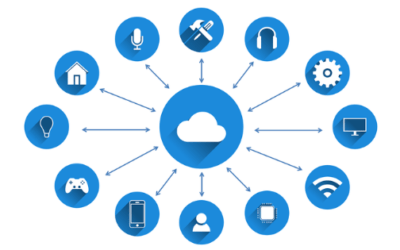Cloud Migration for Your Business
With cloud service providers constantly transforming and offering stronger security and more flexible infrastructures, businesses are now more positive and reassured in moving their data, applications, and other IT processes to another data center. It may be from on-premises on legacy infrastructure to the cloud, or from one cloud to another cloud. If you’re looking into cloud migration for your business, here are the types, tools, and an explanation of exactly how it works.
Types of Cloud Migration
Rehost
Also known as the lift-and-shift model. This simply lifts applications, virtual machines and server operating systems from the current hosting environment to public cloud infrastructure without any changes. Businesses that choose this strategy usually select IaaS. Though this is the easiest and quickest, there is a disadvantage to it. Simply transferring to a public cloud limits your benefits though like no monitoring systems, automated recovery and self healing.
Revise
With the revise method, aside from the standard lift-and-shift, there will be rewriting or expansions to the operating system where the applications or middleware are upgraded. Hence additional cloud benefits like reshaping sourcing environment, fine-tuning of the application functionality, and avoiding post-migration work.
Repurchase or Replace
When utilization Repurchase or Replace, the data is dropped or has expired and switched to ready-built SaaS applications through third party vendors.
Refactor or Rebuild
Businesses that seek improvement refactor. They rewrite or re-architect their applications from scratch, and run them on a PaaS provider’s platform. They must take into account that this might require more resources because of the complexity of its implementation, but benefits will be added like disaster recovery or containerization of the application environment.
Retain
There are businesses that want to retain their legacy infrastructure for security purposes or other constraints. Hence creating a hybrid infrastructure where some workloads are hosted in the cloud and some are kept on-premise.
Retiring
Some infrastructure components are turned off without reduction in productivity or value loss for end customers. Businesses archive parts not needed and replace its functionalities through other services and components.
Application Migration
Application migration is the process of moving an application program from one environment to another. And this can be complicated because there are differences between the original and the target environment. Applications created on specific cloud development platforms are usually designed to run on the platform they are developed on.
Cloud Migration Tools
AWS Migration Services
AWS Migration Services quickly and securely migrates databases to AWS. This tool is designed to minimize downtime for applications that rely on databases. There is no need to change the source database, just install drivers or applications. It also monitors and targets databases continually, and if there is an interruption, it automatically restarts.
Azure Migration Tools
Azure has a migration central hub where teams can start, execute, and track the migration, and one for on-premises migrations. It utilizes end-to-end progress tracking for the database and server migrations. This tool provides an extensible and flexible approach by using assessment and migration tools to streamline the migration process
Carbonite Migrate
This tool helps teams easily move between clouds and platforms for it understands that data migration can be risky and may result in downtime and data loss. It decreases the risk of data migration by establishing a structures and repeatable process for the data migration.
Corent SurPaaS
Corent SurPaas helps teams package applications that can then be delivered on software as a service to customers. It allows users to optimize their operations by balancing workloads and leveraging business opportunities.
Google Migration Services / Velostrata
Commonly know as Migrate for Compute Engine, this tool is designed to improve migration agility and reduce risks associated with migrations with its built-in testing for validation before migration, on-premise rollbacks that allow teams to feel secure in case errors occur, and real-time streaming for running workloads and migrations.
Cloud Deployment Style
Once the migration is done, business will need to consider how they want their cloud deployment to look like. Cloud Deployment styles consist of the following:
Hybrid Cloud
A mixture of two or more types of environment, it might be a combination of a public and private cloud, or a cloud and an on-premise data center.
Multicloud
A combination of two or more public clouds. Some benefits are redundancy/backup, cost savings, or leveraging features from different cloud providers.
Single Cloud
Though this might not be always feasible, deployment with just one cloud vendor is possible, where the cloud provider offers both public and private clouds.
Cloud Migration Service Providers
Accenture
Accenture will help navigate the cloud by scanning and assessing your infrastructure, application and data to determine the best services that fit your strategic business needs with their proprietary tools ensuring minimal risk, time and cost. With the best migration strategy as per one’s needs, they use automated cloud management and migration tools for a smooth transition along with a transformation management plan to keep on track.
Keste
With their years in cloud migration, they are very confident in tailoring the best solution for a business’ smooth and successful migration. Using the 6R migration strategy (Retain, Retire, Rehost, Replatform, Refactor, Rearchitect), they evaluate business needs and want to create a plan to move to AWS Cloud.
Zimcom
Zimcom take pride in their VDRaas (Virtual Disaster Recovery service) which is powered by Veeam that allows businesses to replicate their data and workloads to Zimcom’s secure infrastructure and quick failover in case of a primary system failure.
Centric
Centric is a full-service business consultation and technology solutions company that provides integrated solutions that complement technical clourd work. Their dedicated team with experience in a variety of cloud computing solutions will help your business manage the process and workforce changes that come with moving to the cloud.
Chetu
Chetu is a US-based software development company that provides businesses worldwide with custom technology solutions. Through time, they perfected the art of cloud application development and migrating on-premise systems into the cloud. Optimizing cloud solutions by consolidating infrastructures, standardizing outmoded environments, and modernizing individual resources.
Cloud to Cloud Migration
On your first migration to the cloud, you have chosen based on a number of business factors such as cost, reliability, and security. But as we know, business environments keep on changing, and your business’ needs and priorities might as well change. Hence the need to find a new platform, a better fit. There could be a new system with improved performances, additional tools and functionality that benefit your business. Some platforms might give better pricing and offer richer APIs and better integration capabilities, etc.
However, migrating from one cloud to another can have its complications. Each cloud platform is based on its own unique, proprietary architecture which is not compatible enough to port its applications to other clouds.
If you are wondering how you can utilize a cloud migration service and are looking for other cloud services, set up a free consultation so we can help you find and implement the right solution for your business.




0 Comments